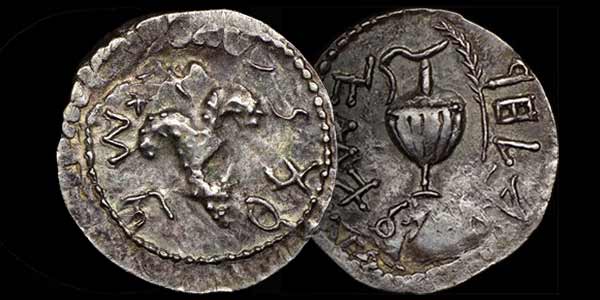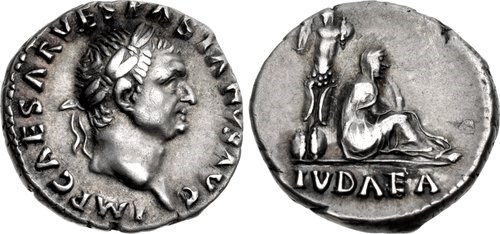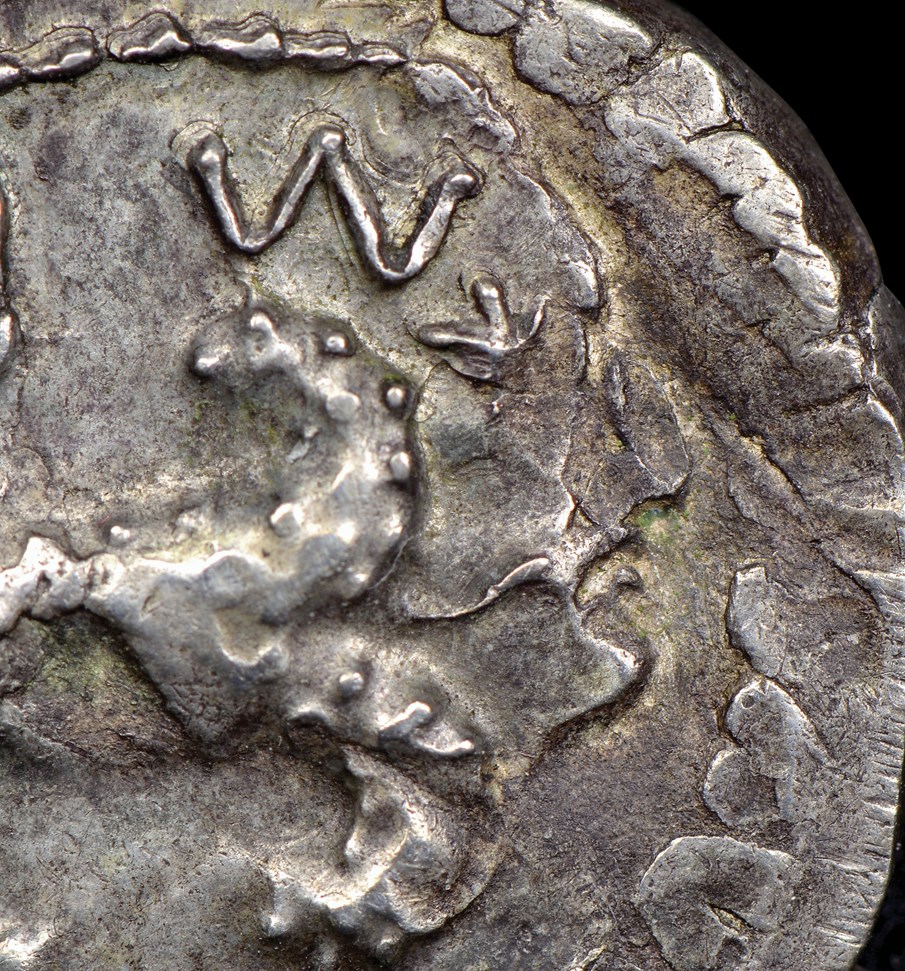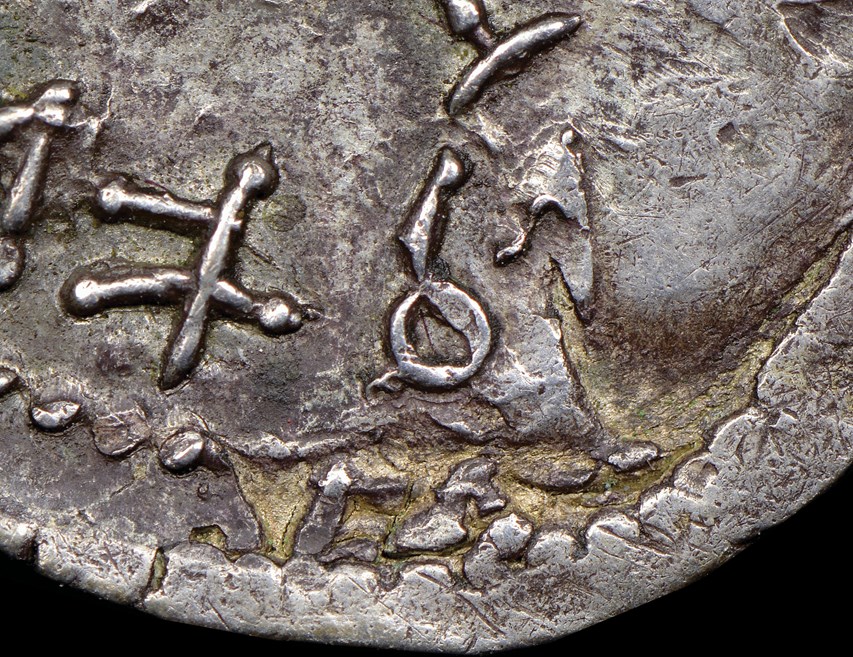NGC brings to light one of the fabled rarities of ancient Jewish coinage
In 132 CE, following nearly 60 years of simmering resentment towards the Roman destruction of the Holy Temple, the people of Judaea were on the brink of rebellion. When the new revolt began, a certain Simon bar Kokhba led a relatively small army of Jewish soldiers against a mighty Roman army commanded by Julius Severus. The struggle lasted three years and the coins struck by Bar Kokhba would be the last Jewish coins struck until the modern age.
The rebels struck no coinage in gold, but produced very large quantities of coinage in silver and bronze. The silver coins were issued in two denominations: a larger one called a Sela (or tetradrachm) and a smaller one called a zuz (or denarius). Bronzes were struck in three denominations, the names of which are not know today; for that reason they are habitually referred to as large, medium and small.

The Bar Kokhba zuz with a ‘Judaea’ undertype. All images courtesy NGC
A common characteristic of these issues is that they were all struck over other coins then circulating in Judaea. The large sela was generally overstruck on Syrian tetradrachms, the dime-size zuz typically was overstruck on Roman denarii or provincial drachms. The bronzes were struck on a wide variety of local issues, the surfaces of which typically were filed before striking.
Trying to identify the undertypes of Bar Kokhba coins can be both challenging and entertaining and it can be a real test of one’s numismatic skills. Sometimes the overstriking process was so effective that no trace of the undertype survives. Other times a few letters or a shadowy trace of a design from the host coin can be seen. Often there is just enough to identify some important aspect of the host coin.
Recently a zuz of the second year of the revolt (133/134 CE) was submitted for grading. It was identified as having been struck with the dies of Mildenberg 39 (Dr. Leo Mildenberg’s The Coinage of the Bar Kokhba War is the standard reference for the series). After a few minutes of careful study, however, it was clear this was no ordinary zuz, for it was overstruck on a IVDAEA denarius of the Roman emperor Vespasian (69 to 79 CE).
On the obverse, under the grapes, Vespasian’s profile is clearly visible, as are the letters SPASIANVS AVG (the original, complete inscription was IMP CAESAR VESPASIANVS AVG). The reverse was a bit trickier, but after close study the AEA of the IVDAEA inscription was clearly identified, with the D being just barely visible if the coin was tilted at the correct angle.

An example of the ‘Judaea’ denarius of Vespasian


Above, Top: The outline of Vespasian’s portrait and its accompanying inscription are seen in the close-up of the obverse; Bottom: Part of the inscription IVDAEA at the bottom edge on the reverse close-up
No other denarii of Vespasian feature these letters in this order, arranged in a straight line, so the identification of the reverse type is certain. Neither the trophy nor the mourning Jewess that on the original coin appeared above the inscription are visible, for they were obliterated in the overstriking process.
It would seem that fewer than five of these IVDAEA undertypes have come to light, with one of them being illustrated and described as coin 1432 in the fifth edition of David Hendin’s Guide to Biblical Coins.
From an historical standpoint, this coin tells a tremendous tale. The host denarius of Vespasian was originally issued in 69 or 70 CE as part of the ‘Judaea Capta’ series that celebrated Rome’s victory in the Jewish War of 66 to 70, which culminated in the sack of Jerusalem and the razing of the Holy Temple. That victory had been led by none other than Vespasian and his eldest son Titus, both of whom were destined to be emperors.
Somehow the host denarius made its way to Judaea, perhaps with a soldier or a merchant. But it most likely would not have circulated there as its design would have been offensive to the local population. Eventually, in 133 CE, the coin found its way to the minting facility then being used by the rebel forces of Bar Kokhba. While there it was restruck and transformed into a new currency, the patriotic designs of which trumpeted the cause of the Jewish rebels.
It has long been suggested that the overstriking process was symbolic as a way for the rebels to ‘erase’ a potent symbol of Roman authority by virtue of creating their own emblems. However, in this case, it would have had even greater meaning since it was also a chance to erase a coin type that celebrated an earlier Roman victory in Judaea.
Unfortunately for the mint workers of Bar Kokhba who performed this overstriking, whatever joy they received from the transformation of this denarius was short-lived, for Bar Kokhba was defeated in 135 and his coinage was quickly removed from circulation.
This coin, now encapsulated by NGC Ancients with a grade of Choice XF, Strike 3/5, Surface 4/5, and a notation of the important overstriking, is featured as lot 2064 in the upcoming auction of ancient and world coins to be held by Stack’s Bowers at the Waldorf Astoria New York City on the evenings of January 13-14, 2017.




